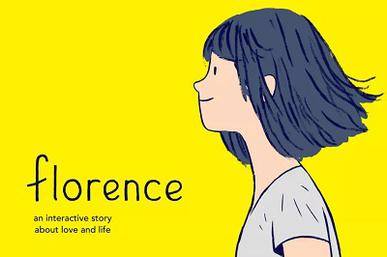Name: Florence
Creator: Ken Wong
Target Audience: Best suited for grades 10, 11 and 12. Can be played by adults too.
Platform: PC
“What does it mean to play that game as a feminist? What critiques do you have of the game. How does it intertwine feminist theories (or other theories mentioned in the book), or fail to do so? If it fails to do so, discuss how utilizing feminist perspectives could improve the game.”
Playing this game as a female character itself made it feel like playing as a feminist. In this game, the player plays the role of Florence who is a female adult leading a regular life, she ends up falling in love, breaking up and then moves on. The entire journey is from the perspective of Florence herself, make the player see the feminist side. If the game would have been redesigned to be played from the perspective of the guy Florence falls for, Krish, the game would not have been as feminist.
While the role player a major role, there were other elements of feminism in the game. The mechanics of the game was very constructive, creative, simple and non-violent. The game consisted of soft and thoughtful activities with the player being asked to interact in the activity in simple ways. This add to the feminism of the game. While playing this game, it is very unlikely to get the emotions which a player would get while playing a typical masculine game.
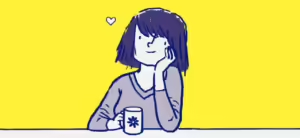
While the game is designed to balance both the genders, it seems that its slightly imbalanced because the vulnerable side of Florence is shown more as compared to that of the guy. Due to this, the game gives a perception that a female is weaker than a male when it comes to relationships. The games begins with Florence leading a monotonous lifestyle, and one day getting attracted to some music, which exaggerates the narrative giving a sense that females are lonely and looking to get attracted.
The next day, when she happens to see Krish walking by she gets into an accident – really? Where does this happen? This is extremely corny and unnecessary.
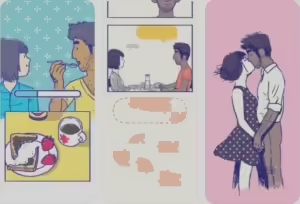
Shira mentions about representing underrepresented communities as a sign of a feminist game. This game does a great job in representing quite a few of such communities – for example, both the characters are people of color. The guy is a street performer to begin with playing a musical instrument. The designer has made interesting aesthetic choices to represent these different communities. Such representation is important, as Shira mentioned, because it leads to a sense of recognition.
Shira also talks about the mechanics being simple and driving the narrative. In the snapshot below, we see that the player has to simply tap the push icon, so that Florence successfully pushed the guy to pursue his career in music. This fits directly into the Shira’s principle of simplicity yet interactivity with the narrative.
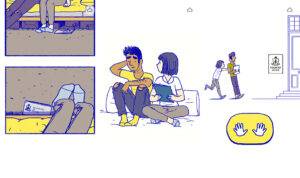
Another instance highlighting this idea is shown below. We that the player needs to simply select some emoticons to send texts between Florence and Krish. While the action itself is simple and does not really affect the narrative, the action makes the player feel connected to the relationship between the two characters. In fact, the player is under an illusion that the player is controlling the relationship, although the entire game’s narrative is scripted and does not change with player’s choices.
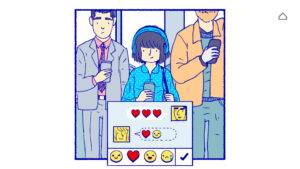
While the game has positives, it also has a few negatives. For example, in the picture below we see a conversation between Florence and her mother where the mother says something along the lines – “you dont have a boyfriend for me”. While this may or may not be true depending on the family and culture, the conversation gives a hint that the entire point of a woman’s life is to find a boyfriend, otherwise the woman is unsuccessful. If we look at it in terms of the principles described in class – identity, time, bodies, emotion – we find that this instance misrepresents a woman’s identity and goals.
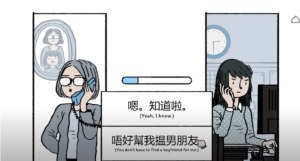
The game does a good job at balancing the power between the two genders towards the end when the break up happens and the characters move on with their lives. For example, here we see the guy is also hurt (like the girl) and the girl is also allowed to express her anger (like the guy).



